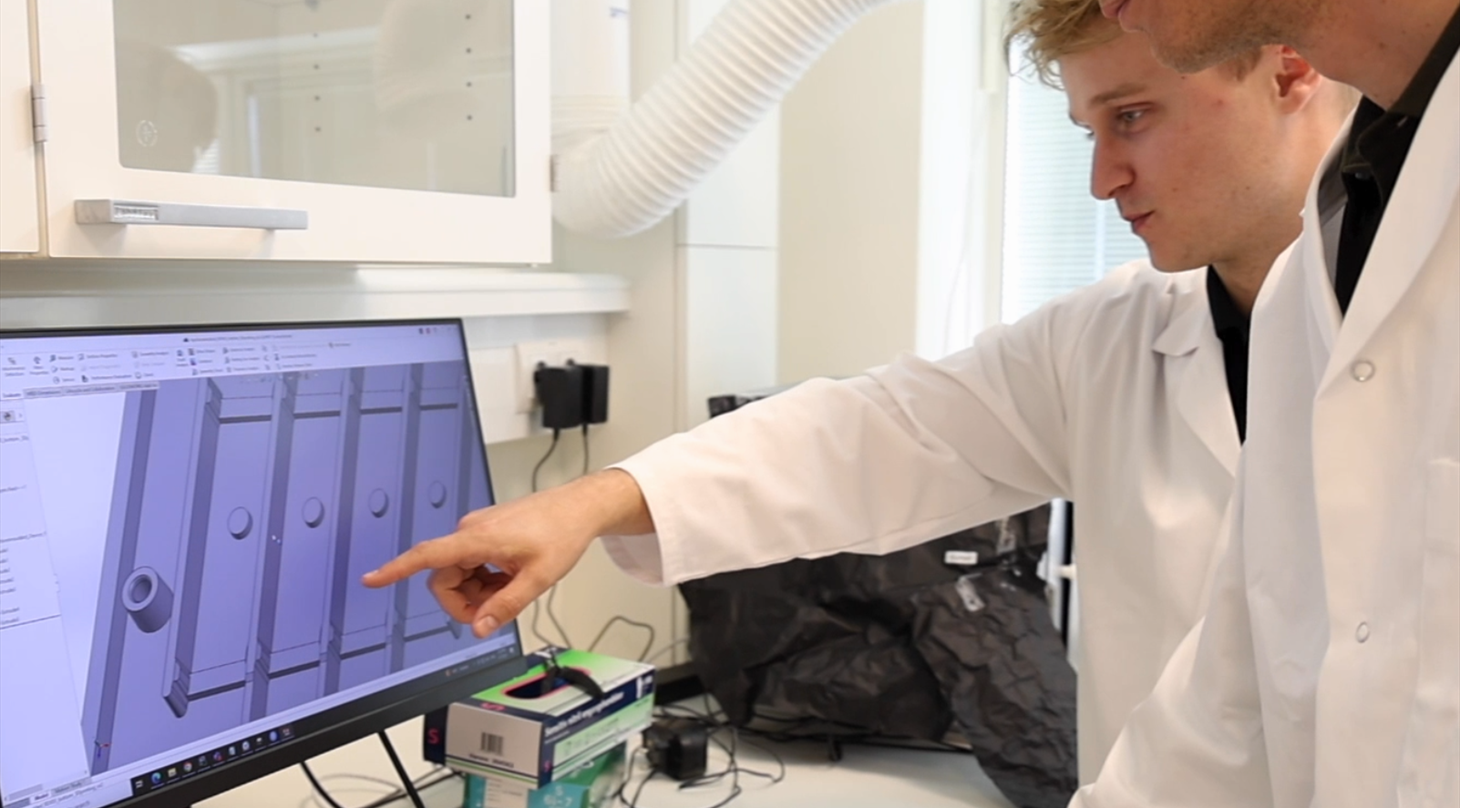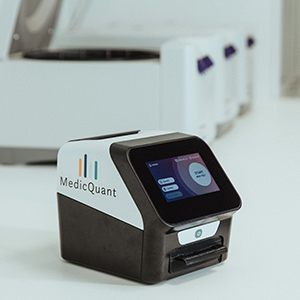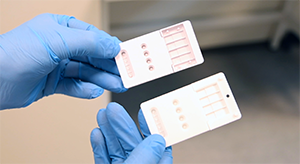
Accelerating diagnostic device development with 3D printing
MedicQuant, a spin-out from Aarhus University, had help from the 3D printing specialists at the Danish Technological Institute when they developed cartridges for their new technology.
 The vision at MedicQuant is to enable healthcare professionals to perform rapid and local anticoagulant tests at the point of care, thereby improving treatment outcomes and saving valuable time. To achieve this, the startup company has developed a technology capable of quantifying anticoagulants from whole blood in less than 10 minutes.
The vision at MedicQuant is to enable healthcare professionals to perform rapid and local anticoagulant tests at the point of care, thereby improving treatment outcomes and saving valuable time. To achieve this, the startup company has developed a technology capable of quantifying anticoagulants from whole blood in less than 10 minutes.
The challenge: Creating a robust, user-friendly cartridge
A key component of MedicQuant’s solution is a single-use cartridge. This cartridge not only houses the assay chemistry but also filters blood to generate plasma for measurement and serves as the primary interface for users. While the initial prototypes could hold the assay chemistry and filter the blood, they lacked the robustness and user-friendliness crucial for effective point-of-care use.
The ultimate goal is to manufacture the cartridge via injection molding. However, iterating on designs with injection molding is both time-consuming and extremely expensive.
Using 3D printing has allowed us to reduce the development cost of the cartridge by about a factor of 10 compared to going through the same process using injection molding
- Jeppe Dehli, MedicQuant
The solution: Rapid prototyping with 3D printing
To accelerate development and control costs, MedicQuant turned to 3D printing, where they had help from the specialists at the Danish Technological Institute. This approach offered several advantages:
- Speed and cost efficiency: 3D printing allowed MedicQuant to test many more design concepts, much faster and at a fraction of the cost compared to injection molding.
- In-house development: Development could be done internally, giving their team full control over iterations and timelines.
- User testing: Early and frequent testing with intended users became possible, ensuring that user-friendliness and functionality were embedded from the outset.
While the main focus was cartridge development, MedicQuant also uses 3D printing for other lab needs, such as custom components and adapters, further enhancing their R&D agility.
Learn more about MedicQuant's 3D printing experiences in the video below.
Danish Technological Institute was the right partner
MedicQuant chose Danish Technological Institute as their 3D printing partner for several reasons. First of all, the printed parts consistently met tight specifications and provided exceptional flatness, which is crucial for MedicQuant’s application.
 Furthermore, the printed materials retained their properties over time, and the 3S surface treatment provided water repellency and a tactile feel that closely resembled the eventual injection-molded product.
Furthermore, the printed materials retained their properties over time, and the 3S surface treatment provided water repellency and a tactile feel that closely resembled the eventual injection-molded product.
- We have a great collaboration with the Danish Technological Institute. The parts are delivered on time, and we have a minimum amount of work from when we send the design file and until we receive the final printed part, says Jeppe Dehli, Technical Project Manager at MedicQuant.
MedicQuant’s journey highlights how strategic use of advanced manufacturing can transform medical device development—delivering better solutions, faster.